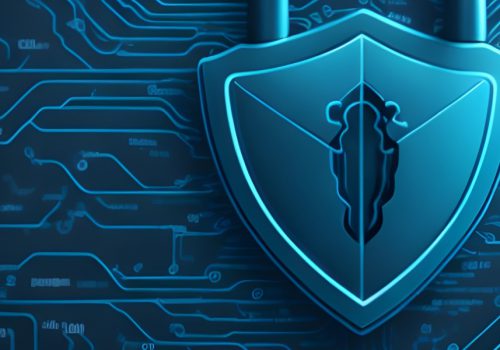Why Should You Accelerate Your Digital Transformation Efforts?
Have you heard about the bridge over the river Choluteca? A 484-metrelong bridge on the river Choluteca located in Honduras, Central America was built in 1996 to withstand storms and hurricanes.
Two years later, Atlantic’s second-deadliest hurricane struck Central America. Hurricane Mitch caused over 11,000 fatalities and there were 75 inches of rain in four days, which was an equivalent of what the country would normally receive in six months. Sure enough, the bridge on the river Choluteca stayed put and maintained its pride.
However, the hurricane also swept away the roads leading to the bridge and rendered them as good as non-existent. The heavy rains caused the Choluteca river to change its course, so it no longer flowed below the bridge! Instead, it created a new channel and flowed beside the bridge. The bridge lost its purpose. It became a “bridge to nowhere.” (The bridge was connected to the highway later in 2003.)
COVID-19 has affected and is still transforming the entire world, from economic and environmental fluctuations to changes in income, education, employment, and more. COVID-19 is an unprecedented crisis, which affects all aspects of our lives and unemployment has skyrocketed. UNDP and ILO report a huge drop in the global workforce in countries because of workplace closures.
And as if COVID-19 was not enough, Merrill Lynch anticipates $14-33 trillion in annual creative disruption impact in 10 years, including $9 trillion cuts in employment costs via automation of knowledge work and $1.9 trillion in efficiency gains via digitally enabled transportation autonomy. They also estimate that up to 50% of all jobs could be at risk of replacement in 20 years due to digital disruption coming from robotics and the Internet of Things.
Furthermore, a major study by researchers from the University of Oxford showing that almost one in two (47%) of jobs in the US are at risk of being computerized in 20 years. Likewise, for the UK, one third (35%) of jobs are at risk of being replaced (Frey and Osborne). This means that no one is secure in the future of work and that we all need to make sure we upskill ourselves and get our organizations through the digital transformation successfully.
Not only are our jobs insecure, there are analysts that say that due to technological disruption, 40% of today’s Fortune 500 companies on the S&P 500 Index will have disappeared by 2025. Meaning not even your company, that has lasted for x number of years, is secure. This was documented by Prof. Mark J. Perry, scholar at the American Enterprise Institute in a famous study, which showed that 87% of the companies that were part of the Fortune 500 had disappeared by 2011. Nokia and Kodak should be good reminders of what can happen to any organization.

This is why you want to build to adapt to the changing global climate and not to last, so what you build loses its purpose. This way, you ensure that your organization keeps the competitive edge and you do what you can to give value in a disruptive market.
Barriers to Succeeding with Digital Transformation — Hint: It’s about People, Not Technology
“There is nothing more difficult to carry out, nor more doubtful of success or dangerous to handle, than to initiate a new order of things.” Niccolo Machiavelli
Delivering successful transformation is a good challenge at best, that is why the bi-annual change management study conducted by Prosci and filled in by organizations all around the world, concludes with only 30% of all transformation processes being successful. The fact is that organizations do not just change because of new systems and digital transformation, processes, or new organizational structures. They change because the people within the organization adapt and change too. Only when the people within it have made their own personal transitions can an organization truly reap the benefits of digital transformation.
Resistance from people in the organization and low engagement in the transformation are the main barriers to succeeding with digital transformation. Our general first rule is to include everyone in the organization, from day one, in the transformation. It may not be convenient and you may not have much information to give; however, it is crucial to eliminate negativity and rumors from the first get go.
A reason why your change project may fail is that no one thought of how to manage the impact of the ending of the old culture on the people in your organization. Naturally, people are concerned about the future, and, as a leader, you can sometimes forget that your employees have to let go of the present first.
The first task of any transition is to convince people to leave home and make them understand that they are going to be better off where they are going!
Many employees can be shielded from the consequences of change. To you, as a leader, the change may feel like “safety” as there is not any other choice that makes economic sense, but to employees it can feel like a loss.
“It isn’t the changes that do you in, it’s the transitions.” William Bridges

The three phases in the model are not separate stages with clear boundaries. They overlap, and you will be in more than one phase at any time as some people will move faster than others.
Here are the types of loss people can feel in an organization going through transformation:
- Loss of control: If people are not fully engaged in the process, even if it is a positive change, it will feel like a loss.
- Loss of pride: Many leaders cheer — lead the future at the expense of the past, but employees built the organization through their hard work so remember this (appreciative enquiry can be a useful approach).
- Loss of narrative: The stamp employees have put their name to is connected to personal values i.e., it is their story often over many years.
- Loss of competence: Anytime you ask an employee to embrace innovation you ask them to move away from expertise.
- Loss of time: As leaders, you will need to be mindful that you need to take tasks off people to introduce something new.
- Loss of familiarity: We get comfort from what we know. Change takes our comfort away.
It is important to remember that as a leader, you have had months of planning to get on board with the change. You are at the front of the change curve while your people are way behind, at the back of the change curve. And, often, to the recipients of change, the announcement comes with little context of “why” the change is happening, what is in it for them, or the impact the change will have on them.
How to lead through endings:
- Identify who is losing what
- Do not be surprised by over-reaction
- Acknowledge the losses openly and empathetically
- Expect and accept the grieving signs
- Give people information repeatedly
- Be clear what is in and what is out
- Mark the endings in some way
- Treat the past with respect — take the good stuff with you
- Let people take a piece of the old with them

The Neutral Zone
“Often when you think you’re at the end of something, you’re at the beginning of something else.” Fred Rogers
This is the sea between the old and the new. It can take days or months or even years to cross. This is where resistance can really kick in. This is how resistance can show up (Source: Prosci).
- Emotion: Fear, loss, sadness, anger, anxiety, frustration, depression, focus on self
- Disengagement: Silence, avoidance, ignoring communications, indifference, apathy, low morale
- Work impact: Reduced productivity/efficiency, noncompliance, absenteeism, mistakes
- Acting out: Conflict, arguments, sabotage; overbearing, aggressive, or passive/aggressive behavior
- Negativity: Rumors/gossip, miscommunication, complaining, focus on problems, celebrating failure
- Avoidance: Ignoring change, reverting to old behaviors, workarounds, abdicating responsibilities
- Building barriers: Excuses, counter-approaches, recruiting dissenters, secrecy, breakdown in trust
- Controlling: Asking lots of questions, influencing outcomes, defending current state, using status
Just as change is individual — person-by-person — so is resistance to change. The root cause for one person’s resistance is not the same as another person’s, considering factors such as personal history, current events in their life, and other current changes at work can help you help them through the resistance.
Resistance has costs — it is not free. And, to avoid these costs and the potential risks to a project or change initiative, it is important to develop a planned and intentional approach to manage resistance to change.
However, the neutral zone can also be a time of creativity and engagement. How can you navigate and lead through the sea of the neutral zone?
- Use this opportunity for reorientation and redefinition, and to do things differently and better.
- Help people regain their balance by ensuring that systems, communications, etc., are fit for the purpose. Short-terms goals can be useful as they can help see “the light in the end of a tunnel” and can help them to manage the transition.
- Engage employees in what the “new beginning” will look and feel like; enable excitement. Foster change ambassadors and champions — gather those who are enthusiastic about the future to help engage the ones who are not so enthusiastic about it.

Checkpoints for Your Successful Digital Transformation
Your role as leader of your future of work is crucial to the success of your digital transformation. What does it mean? You’ll benefit from:
- Leading by example, role modeling values and behaviors
- Supporting the transformation by giving it your consistent and constant attention
- Championing the change by leading and motivating others to do the changes you do
- Being available to make effective and influential decisions regarding digital transformation
To make a fresh start and go well through digital transformation you need the Four P’s:
- Purpose: Clarify and communicate the purpose and translate into a language that front-line people can understand. Consider the point of view of “WIFFM” — what’s in it for me?
- Picture: Give people, or even better, use people to help create a picture of how the outcome will look and how it will feel. Be careful not to overwhelm people. Give the picture in bite size chunks if appropriate.
- Plan: Make a plan that outlines the steps and schedule in which people will receive information, training, and the support they will need to make the transition.
- Part to play: Finally, give people a role to play in the journey. Engage with them in the design and of the new beginning as far as you can. Because, everyone who plays a part will be implicitly implicated in the outcome.
In addition, be consistent in your messaging, ensure partway milestones and quick success, celebrate successes among the way, small and big ones.

How Can You Leverage Well-being in Your New Virtual Organization?
Practical Tips on How to Thrive Post COVID-19
The pandemic lockdowns put in place to fight the spread of the coronavirus have accelerated the already growing trend of holding virtual meetings. Virtual conversations, presentations, and meetings tax our brains much more than in-person interactions because they require higher levels of sustained concentration. You are concentrating on the other speakers, their surroundings, and yourself — how you appear on the webcam. And all of that intense focus is on a digital screen, an unnatural environment. What can you do and help your organization do to combat virtual meeting fatigue?
- Keep your daily health routine and if you don’t have one, what is the one thing you can commit to today to be more rested and have more energy.
- Schedule breaks between online meetings. It is tempting to schedule back-to-back virtual meetings because the travel time is eliminated. We can easily jump to the next Zoom link instead of taking the elevator to the 5th-floor conference room. Use the phone as well. You can also occasionally call in to that virtual meeting instead of videoing in. That gives you the opportunity to walk around and even step outside during it.
- Build in breaks during longer meetings. It is amazing how much concentration it takes to engage in an online meeting. There are so many more distractions and things to look at than an in-person meeting in a conference room or someone’s living room. Normal meeting actions, like looking out of the window while someone else is talking, can seem very disengaging on a video call. You feel the need to focus on the screen the entire time. That makes a two-hour virtual meeting feel more like four hours. It is important to schedule in five- to 10-minute breaks every hour for participants to use the restroom or just disengage from a screen.
- Schedule shorter meetings. We know virtual meetings always feel longer than physical meetings, so plan for it and keep most of your meetings shorter. 25 minutes instead of 30 or 50 instead of 60 minutes to allow break before next meeting. At Google, all meetings are either 25 or 50 minutes long.
- Keep a Zoom Free day. Having a day scheduled each week for no meetings is good advice anytime, but especially now with everything taking place in one location. As this isolation goes on, lines drawn in our lives will begin to blur. In this time it will be easy — and unhealthy — for the office to take over too much of our homes. Because of this you might consider, as a team, making certain days “meeting-free” or giving team members the right to decline meetings for various reasons.
- Schedule technology breaks. Everyone’s calendars are different, and there will be some of us who have more meetings.









